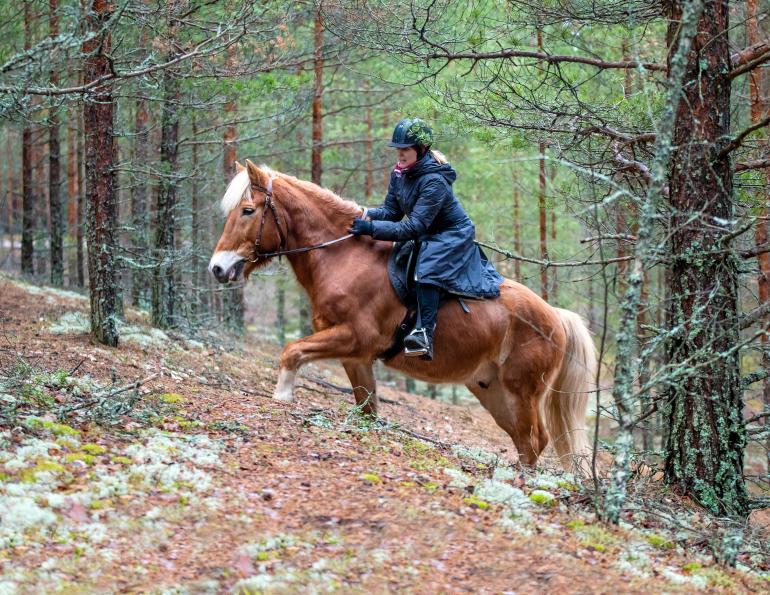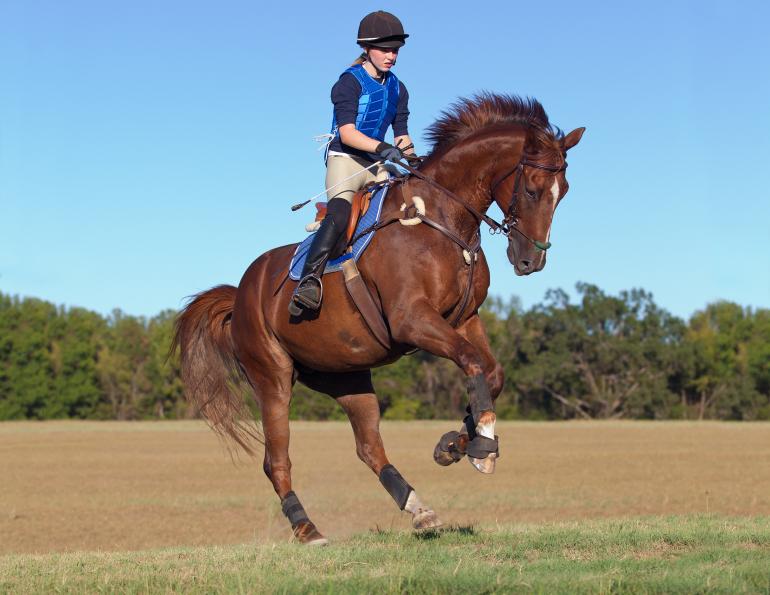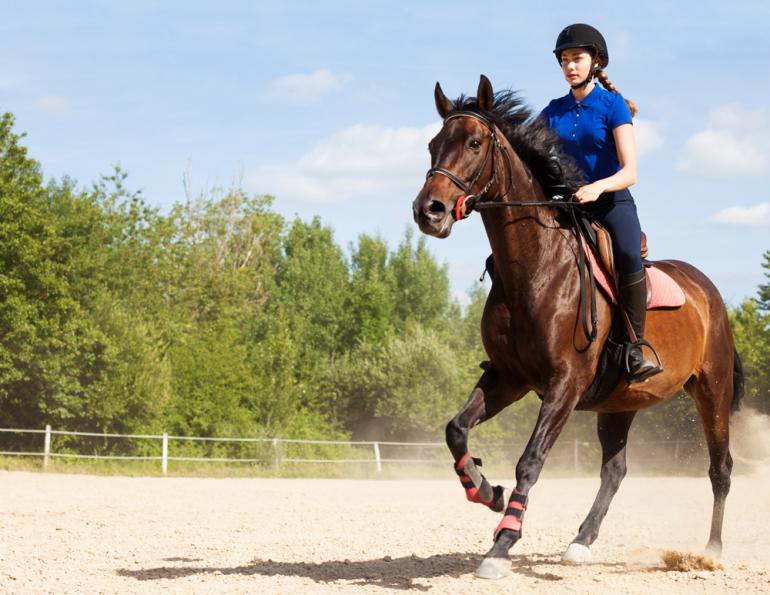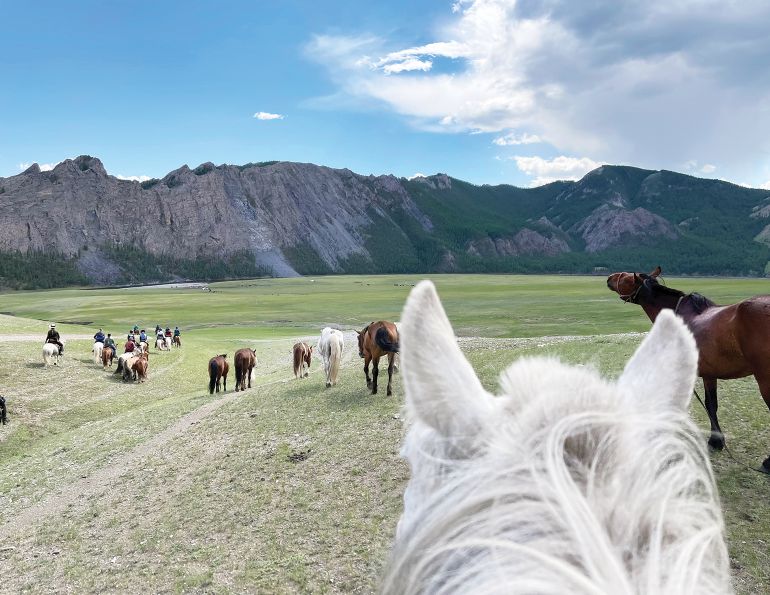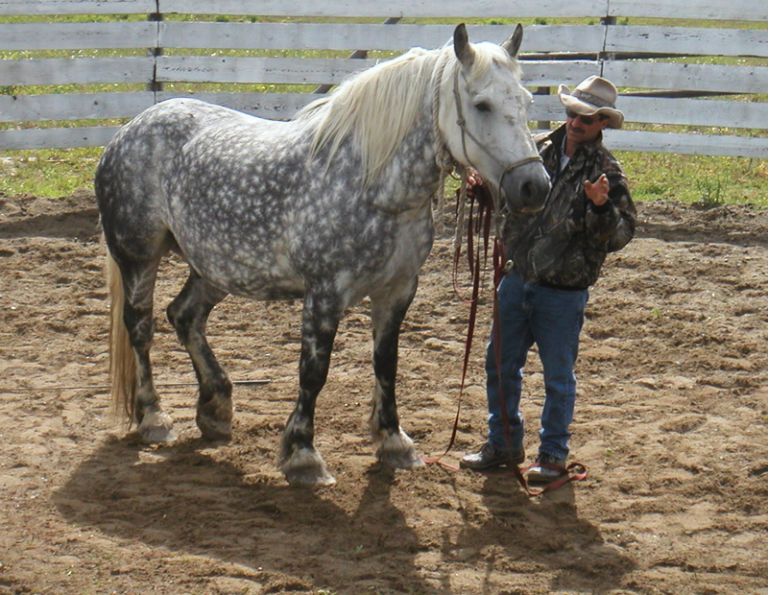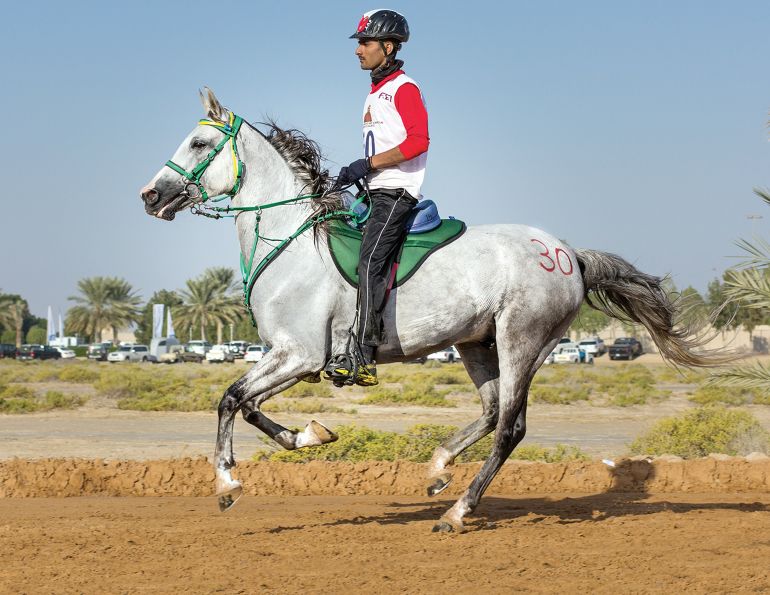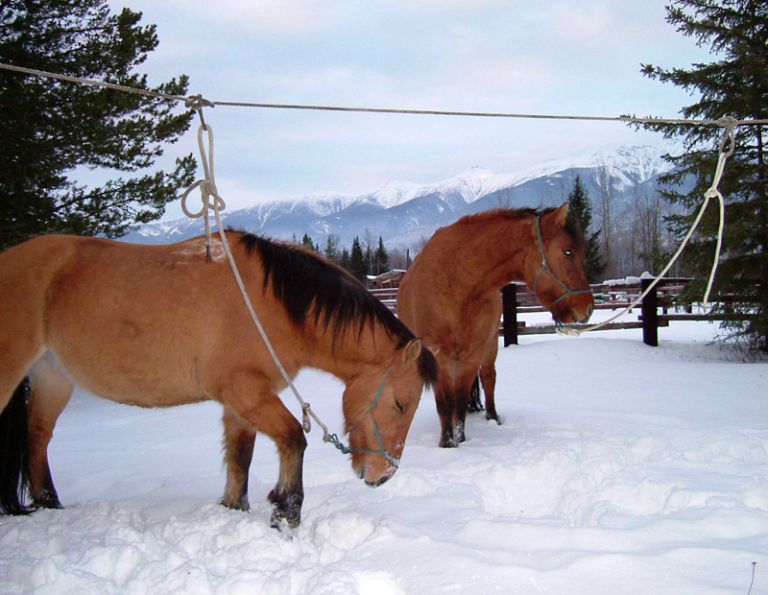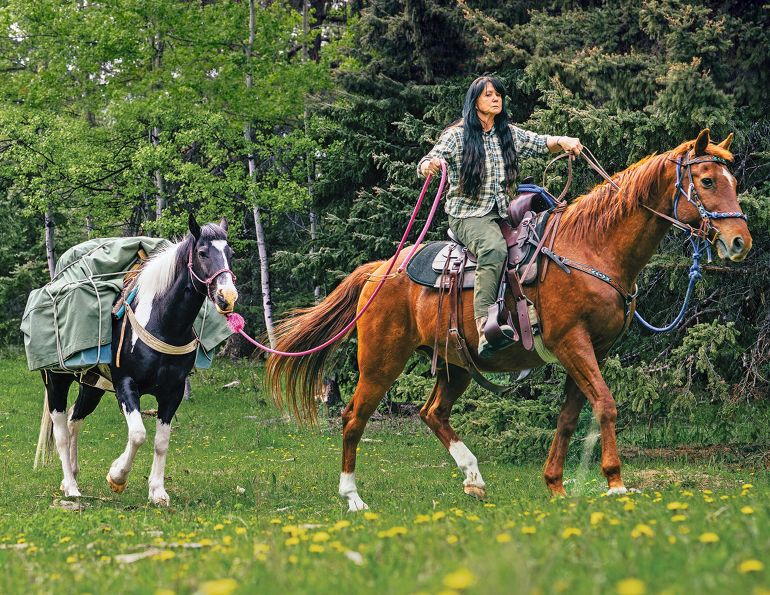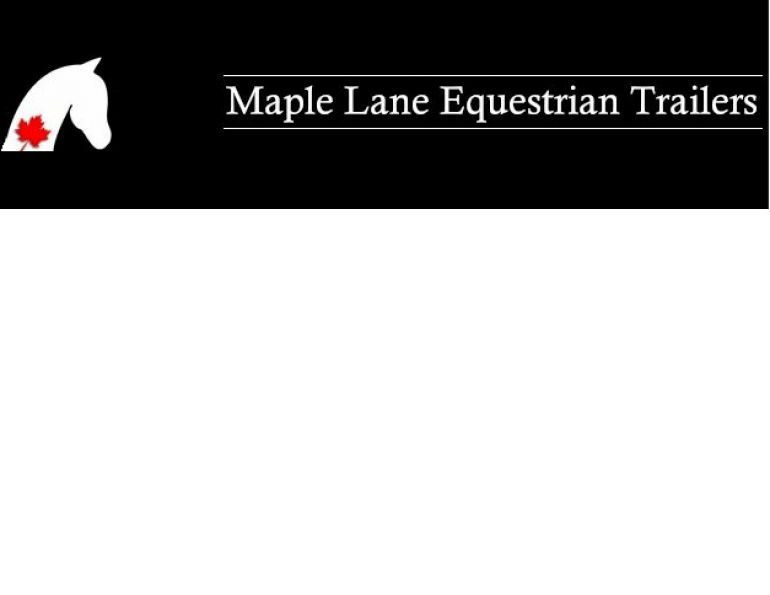Courtesy, Communication & Common Sense
By Pat Barriage, Horse Industry Association of Alberta
Etiquette and safety are closely related, in many cases, a lack of one creates a breach of the other. Poor etiquette typically leads to unsafe situations, while good etiquette paves the trail for a safe riding experience. It is the right and responsibility of every trail user to ensure their own safety and expect safe practices from other trail users. Exercise caution at all times, and follow guidelines and rules of the trails. Contribute to a safer outdoor experience for all trail users by always practicing the 3 Cs of Trail Etiquette – Courtesy, Communication and Common Sense.
- Trail etiquette rules indicate cyclists must yield to hikers and horses, and hikers must yield to horses. Though most hikers and bikers will yield the right-of-way to horses, remember that many folks do not have experience with horses and may not know what to do. Trail etiquette and safety calls for cyclists to yield to hikers and horses, and hikers to yield to horses.
- As a rider, you have the responsibility to manage your animals on the trail. It is not recommended to bring “green” horses to multi-use trails.
- Make sure the trail matches your horse’s current fitness level. Horses need to build their strength and endurance gradually, just like humans.
- Check your tack regularly for proper fit.
- Never go trail riding alone. Always let someone know where you plan to ride and approximately when you expect to return.
- Protect your head - wear an ASTM/SEI certified riding helmet. There are ample studies proving the benefits of wearing approved headgear when participating in equestrian and non-equestrian recreational activities.
- Carry a cell phone, trail map, and compass on your body, not on your horse.
- Attach an identification tag to your horse’s gear.
- Tie a red ribbon on your horse’s tail if he has been known to kick.
- Carry a first aid kit for human and horse.
- Know how to monitor your horse’s vital signs.
- Balance the load in your saddle bags as evenly as possible, to within a few ounces.
- Use insect repellent on both you and your horse.
- Do not bring an off-leash dog on the trail.
- Alcohol and riding do not mix. Confine your alcohol consumption to your camp area.
- Dismount to smoke. Ensure the cigarette butt is completely extinguished and pack it out with you.
Related: Riding Horses in Bear and Cougar Country
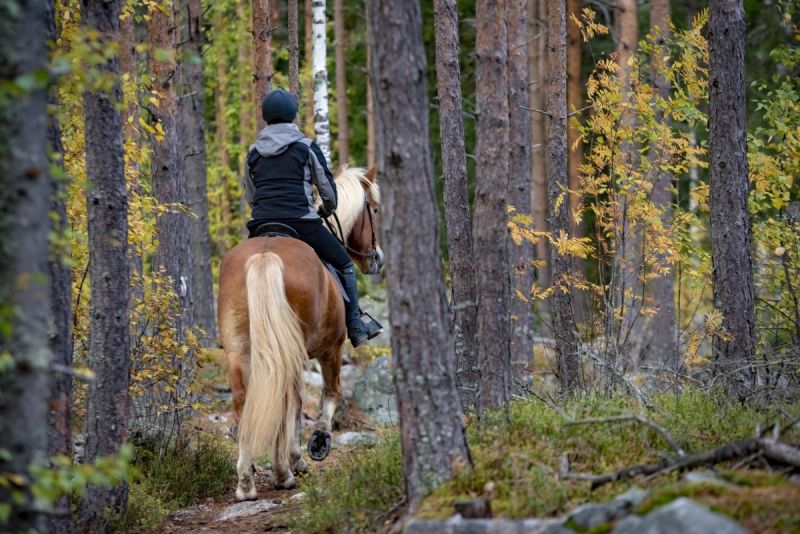
iStock/Sitikka
- Respect private property. Permission to access farmland should be obtained prior to the ride. Carefully ride single file around the edge of any crops or stay on the path. Leave gates as you find them, open or closed.
- Wait for gate openers/closers.
- Do not disturb wildlife or stock at large.
- Always be vigilant for other users in front of you, behind you, and meeting you at trail intersections. With a friendly greeting, do your utmost to let your fellow trail users know you’re coming. Strive to make each pass a safe and courteous one.
- Be friendly toward other trail users. Stop, speak, answer questions, whatever it takes to present a good image of equestrian trail users. When out in the public, you are representing all equestrians.
- Ride at the level and speed of the least experienced rider.
- Before increasing speed, get unanimous consent from the group.
- Make sure to walk and rest after periods of trotting.
- Leave one to two horse lengths between horses. Make sure you can always see the heels of the horse in front of you from between your horse’s ears.
- Road riding can be dangerous. Ride on the right side in single file as far off the road as you safely can. When crossing the road, do so only when the way is clear for all horses in your group to cross at the same time.
Related: Road Safety for Equestrians
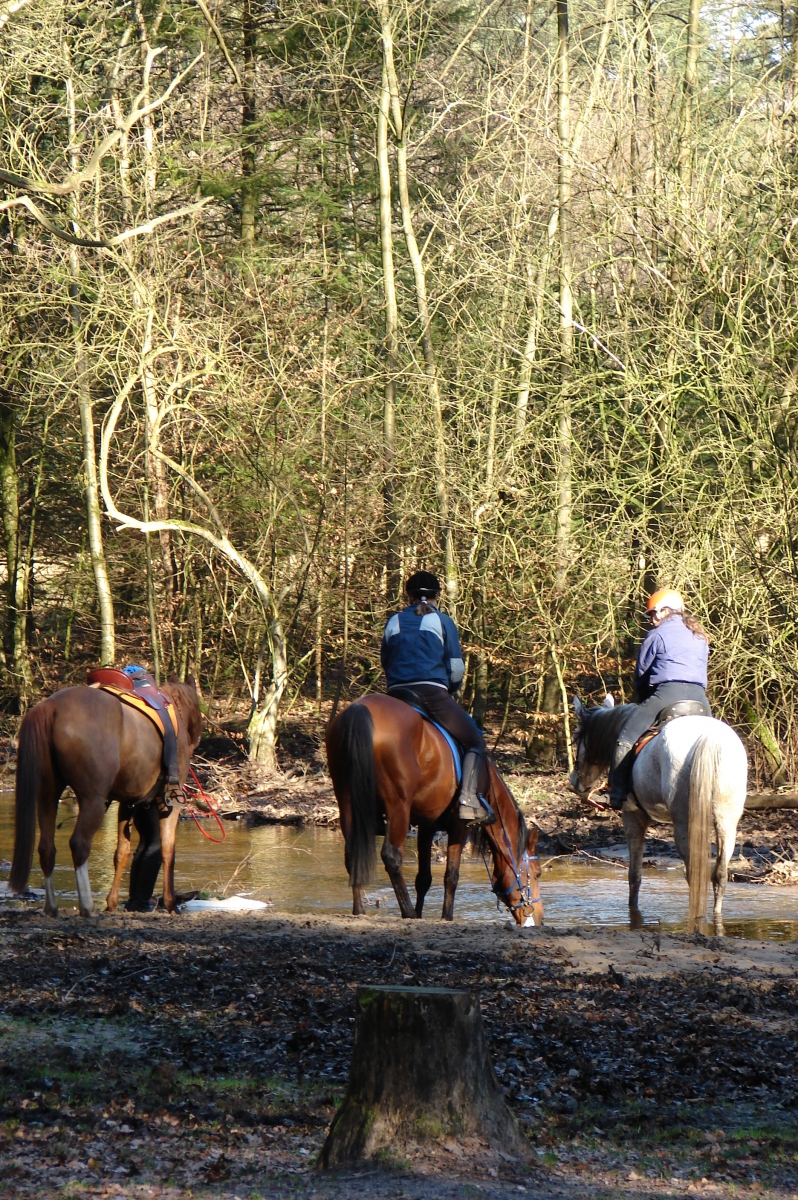
- Allow your horse the opportunity to drink at water crossings. Wait for others in your group to drink before leaving the watering area. Move downstream to allow ample room.\
- Wait for riders who might be having difficulty crossing water or bridges.
- Always remove a tie-down or martingale before crossing water in case you encounter a deep spot. These devices restrict your horse’s ability to swim.
- Warn other riders if you will be passing them from behind, and overtake other riders on their left side. Pass oncoming riders, left shoulder to left shoulder.
- If your horse is getting too close to a tree or obstacle and it looks like he might hit it, slightly turn his head toward it and use your inside leg (leg closest to the obstacle) to yield him away from the obstacle.
- Lift low hanging branches up over your head, rather than pushing them forward, to ensure they don’t snap back at the horse behind you.
- Use your body position to help maintain your horse’s balance while traveling uphill (tilt your body slightly forward and extend your arms up the horse’s neck to give him his head) and downhill (lean upper body back, push feet forward in your stirrups so legs are in front of the cinch/girth, and hold reins slightly higher than usual).
- If you must turn around on a hillside trail, always turn the horse’s head to the downhill side. Your horse can see his front feet better than he can see his hind feet, and wants to keep his feet on the trail as much as you do.
- Socializing on the trail adds to the experience, but remember to always pay more attention to your horse and his body language than to the conversation.
- If you stop for a lunch break along the trail, remove your horse’s bridle and loosen the cinch/girth. Better yet, remove the saddle completely. Tie your horse to a solid object at wither height. It is recommended that any tree you want to tie to be at least 20 cm (eight inches) in diameter to be substantial enough to hold a horse should something spook him. Bring a snack of carrots or crunchies for him.
- Follow the Leave No Trace principles by collecting manure and scattered hay from your tie site and disposing of it at home or in a designated area. Do not litter on the trail – if you packed it in, pack it out. If you have room, pick up what others have carelessly left behind. “Take only memories – leave only footprints.”
- Always return to the trailhead at a walk.
- Make sure to cool your horse down properly to relieve and prevent lactic acid buildup in his muscles.
- Re-evaluate your horse’s saddle fit after your ride. Check to see if your horse sweated evenly under the saddle pad to make sure your saddle doesn’t have any pressure points (dry spots) that would indicate an ill-fitting saddle.
While there are few “official” rules for trail riding, these are some commonly accepted practices that are good to remind ourselves of every once in a while. The word etiquette implies good manners, but the result is a safer experience for you and your horse, and other trail users.
Related: Horses with Jobs: Pack Horses
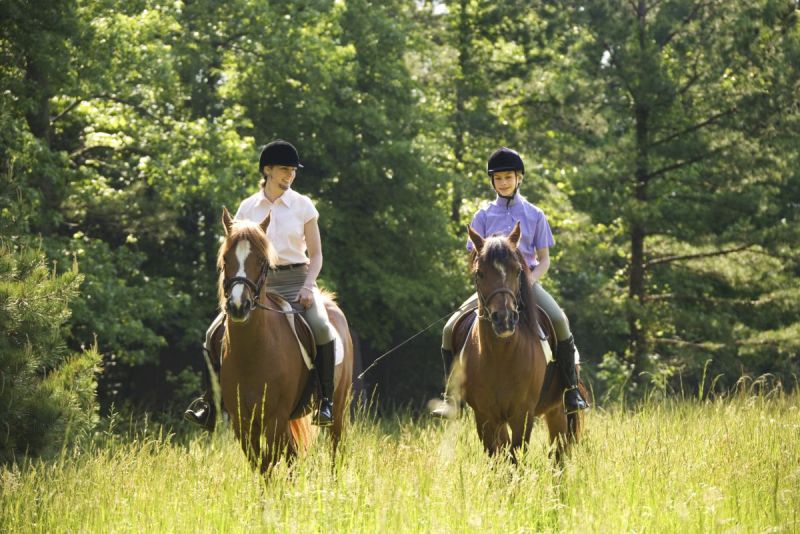
Photos.com
Related: Trail Ghosts: Despooking the Trail Horse
Pat Barriage is a horse industry technical writer and a published author. Reprinted with kind permission from the Horse Industry Association of Alberta.
Main Photo: iStock/Sitikka



